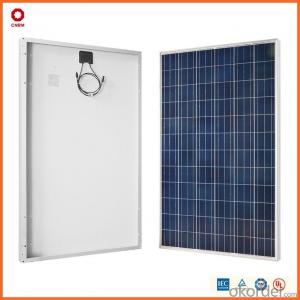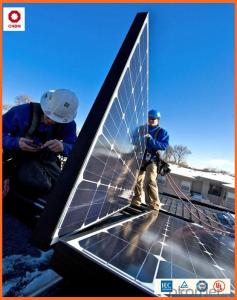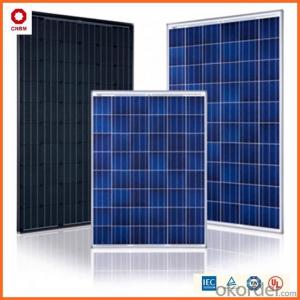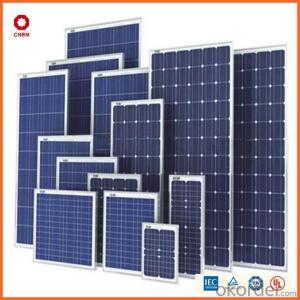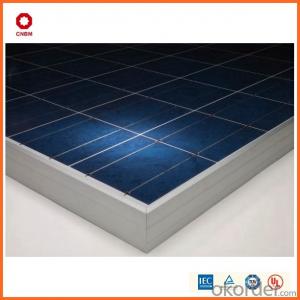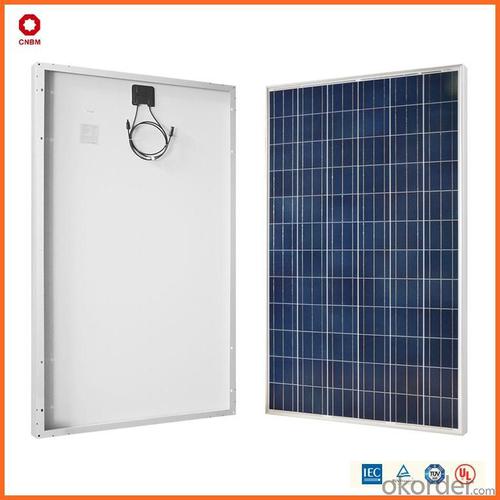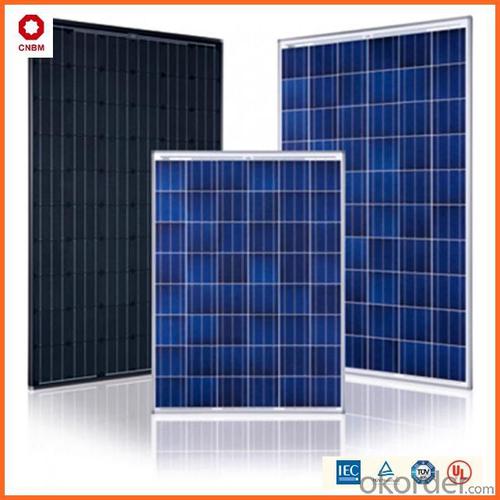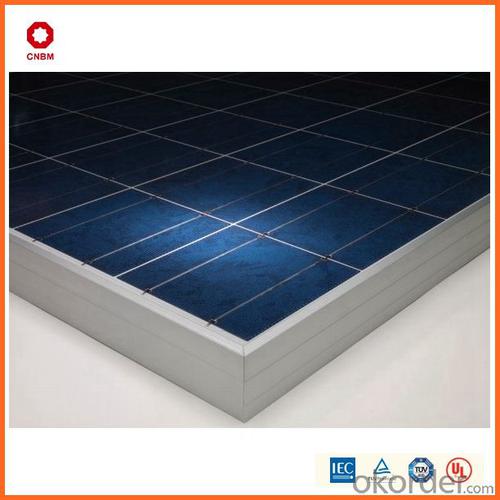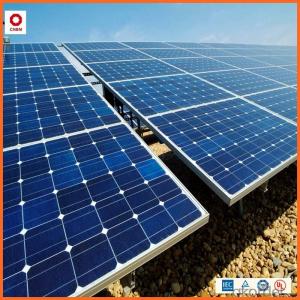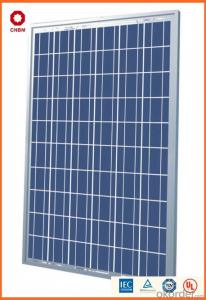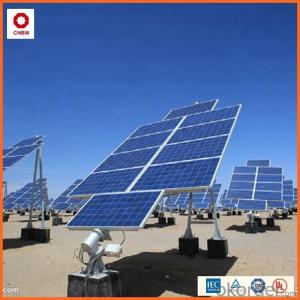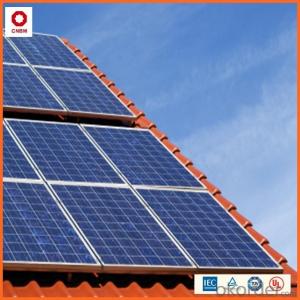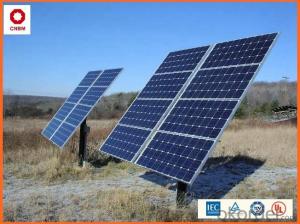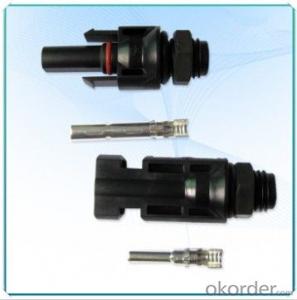Smac Solar Energy Systems - !!! Hot on Sale!!! Stock 310W Poly Solar Panel USD0.46/W A Grade Good Solar Panel on Sale
- Loading Port:
- China main port
- Payment Terms:
- TT OR LC
- Min Order Qty:
- 1 watt
- Supply Capability:
- 10000000 watt/month
OKorder Service Pledge
OKorder Financial Service
You Might Also Like
Product Description:
Hot Sale !!! Quality and Safety of 245w-320w Poly Solar Panel
1. Rigorous quality control meets the highest international standards.
2. High-transmissivity low-iron tempered glass, strong aluminium frame.
3. Using UV-resistant silicon.
4. IS09001/14001/CE/TUV/UL
Warranties of 245w-320w Poly Solar Panel
1. 10 years limited product warranty
2. 15 years at 90% of the minimal rated power output
3. 25 years at 80% of the minimal rated power output
Technical date of 245w-320w Poly Solar Panel
ITEM NO.: | Mono 125*125 cell ,36pcs . Power range from 80Wp-100Wp | ||||||||
Maximum Power(W) | 80 | 85 | 90 | 95 | 100 | ||||
Optimum Power Voltage(Vmp) | 17.81 | 17.89 | 17.94 | 17.99 | 18.06 | ||||
Optimum Operatige Current(Imp) | 4.78 | 4.91 | 5.12 | 5.35 | 5.59 | ||||
Open Circuit Voltage(Voc) | 21.98 | 22.05 | 22.14 | 22.28 | 22.45 | ||||
Short Circuit Current(Isc) | 4.95 | 5.15 | 5.36 | 5.65 | 5.84 | ||||
Solar Cell: | 125*125 Mono | ||||||||
Number of Cell(pcs) | 4*9 | ||||||||
Brand Name of Solar Cells | JA Cell, Bluesun Cell | ||||||||
Size of Module(mm) | 1580*808*35 | ||||||||
Caple & Connector Type | Pass the TUV Certificate | ||||||||
Frame(Material Corners,etc.) | Aluminium-alloy | ||||||||
Backing (Brand Type) | TPT | ||||||||
Cell Efficiency for 100W(%) | 15.8% | ||||||||
Weight Per Piece(KG) | 12.0KG | ||||||||
FF (%) | 70-76% | ||||||||
Junction Box Type | Pass the TUV Certificate | ||||||||
Tolerance Wattage(e.g.+/-5%) | ±3%, or 0-3% | ||||||||
Front Glass Thikness(mm) | 3.2 | ||||||||
Temperature Coefficients of Isc(%) | +0.04 | ||||||||
Temperature Coefficients of Voc(%) | -0.38 | ||||||||
Temperature Coefficients of Pm(%) | -0.47 | ||||||||
Temperature Coefficients of Im(%) | +0.04 | ||||||||
Temperature Coefficients of Vm(%) | -0.38 | ||||||||
Temperature Range | -40°C to +85°C | ||||||||
Surface Maximum Load Capacity | 2400Pa | ||||||||
Allowable Hail Load | 23m/s ,7.53g | ||||||||
Bypass Diode Rating(A) | 12 | ||||||||
Warranty | 90% of 10 years,80% of 25 years. | ||||||||
Standard Test Conditions | AM1.5 1000W/ 25 +/-2°C | ||||||||
Packing | carton or pallet | ||||||||
1*20' | 25 Pallets / 450pcs | ||||||||
1*40'STD | 25 Pallets / 100pcs | ||||||||
Features of our products:
• High conversion efficiency mono/poly-crystalline amorphous silicon solar cells
• Modules incorporate high performance bypass diodes to minimize the power drop caused by shading
• High transmittance, low-iron tempered glass
• High performance EVA encapsulant to prevent destroying and water.
• AI frame: without screw, corner connection. 8 holes on the frame can be installed easily
• Good performance of preventing from atrocious weather such as wind and hails
• Certifications: CE IEC TUV VDE UL, Class I
• 10 years 90% power output warranty
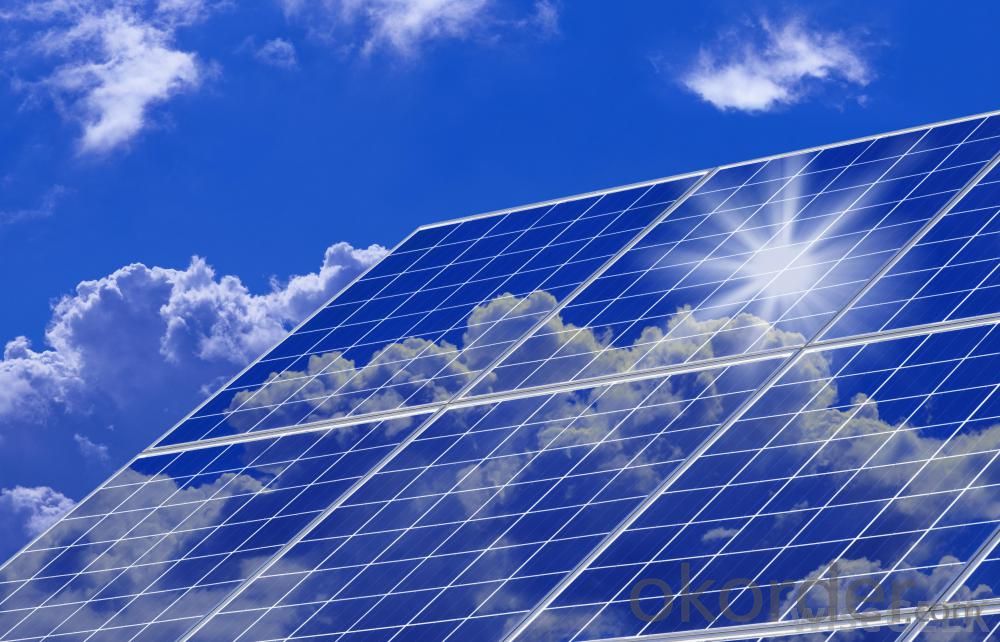
Shipping of 245w-320w Poly Solar Panel
By Sea | Delivery from Shanghai or Ningbo seaport |
By Air | Departure from Shanghai Pudong Airport |
By Express | Post by DHL, EMS, UPS, TNT. |
- Q: Can solar energy systems be used in areas with strict building codes?
- Yes, solar energy systems can be used in areas with strict building codes. However, the installation of these systems may require adherence to specific regulations and guidelines set by the local authorities. It is important to work with experienced professionals who are familiar with the building codes and can ensure that the solar energy system meets all the necessary requirements.
- Q: How do I monitor the performance of my solar energy system?
- To monitor the performance of your solar energy system, you can use various methods. One way is to install a monitoring system with software that provides real-time data on energy production, consumption, and system efficiency. This system can track key metrics like solar panel output, battery charge levels (if applicable), and overall system performance. Additionally, you can monitor your utility bills to see the impact of your solar energy system on your energy consumption and savings. Regularly checking for any noticeable changes in energy production or system issues can also help ensure optimal performance.
- Q: How does the efficiency of solar panels vary across different angles of sunlight?
- The efficiency of solar panels varies across different angles of sunlight due to the concept of the incident angle. Solar panels are most efficient when the sunlight hits them at a right angle (90 degrees). As the angle of sunlight deviates from this optimal angle, the efficiency of the solar panels decreases. When sunlight strikes the panels at a shallow angle, the light has to travel a longer distance through the panel, reducing the amount of energy that can be harvested. Similarly, when sunlight hits the panels at a steep angle, a portion of the light may be reflected away, resulting in lower efficiency. Therefore, solar panels are designed to track the movement of the sun throughout the day to maintain the best possible angle for maximum efficiency.
- Q: Can a solar energy system be used in areas with high levels of dust or sand?
- Yes, a solar energy system can still be used in areas with high levels of dust or sand. However, the efficiency of the system may be affected as the accumulation of dust or sand can reduce the amount of sunlight reaching the solar panels. Regular cleaning or maintenance may be required to ensure optimal performance of the system in such environments.
- Q: Can solar energy systems be used in powering art galleries or museums?
- Yes, solar energy systems can indeed be used to power art galleries or museums. Solar panels can be installed on the rooftops or surrounding areas of these buildings to capture sunlight and convert it into electricity. This renewable energy source can provide a sustainable and cost-effective solution for powering lighting, climate control systems, and other electrical needs within art galleries and museums. Additionally, using solar energy can contribute to reducing the carbon footprint of these institutions, making them more environmentally friendly.
- Q: Can solar energy systems be used in powering sports stadiums?
- Certainly, sports stadiums can be powered by solar energy systems. In fact, numerous stadiums worldwide have already begun implementing solar energy systems to fulfill their energy requirements. To harness sunlight and convert it into electricity, solar panels can be installed on stadium rooftops, parking lots, or open areas. The primary benefit of utilizing solar energy to power sports stadiums is its sustainability and cost-effectiveness. Solar energy is a renewable energy source that doesn't emit any greenhouse gases during operation, making it environmentally friendly and assisting in reducing carbon footprint. Additionally, once the initial investment is made to install solar panels, the ongoing operational costs are relatively low, resulting in significant energy bill savings for the stadium. The size and structure of sports stadiums make them excellent candidates for solar energy systems. The stadiums' expansive surface areas provide ample space for installing a substantial number of solar panels, which can generate a significant amount of electricity. Furthermore, the open spaces surrounding the stadium allow for optimal sunlight exposure, ensuring maximum energy generation. Moreover, solar energy systems can be integrated with other technologies to enhance efficiency and functionality. For example, battery storage systems can be utilized to store excess energy generated during the day and use it during nighttime events or periods of low sunlight. This ensures a continuous and reliable power supply to the stadium, regardless of weather conditions or the time of day. In conclusion, solar energy systems can certainly be employed to power sports stadiums. They offer a sustainable and cost-effective solution to meet the energy requirements of these large facilities while also reducing their environmental impact. With further advancements in solar technology and decreasing costs, it is expected that more sports stadiums worldwide will embrace solar energy as their primary power source in the future.
- Q: Can solar energy systems be used in conjunction with battery storage?
- Yes, solar energy systems can be used in conjunction with battery storage. Battery storage allows excess solar energy to be stored for use during periods of low sunlight or at night, thereby increasing the overall efficiency and reliability of the solar energy system.
- Q: Can a solar energy system be installed on a mobile home?
- Yes, a solar energy system can be installed on a mobile home. In fact, mobile homes are great candidates for solar installations due to their smaller size and often more flexible roof configurations.
- Q: Are there any financing options available for purchasing solar energy systems?
- Yes, there are several financing options available for purchasing solar energy systems. One common option is to take out a solar loan, which allows homeowners to borrow money specifically for the purchase and installation of a solar energy system. These loans typically have low interest rates and flexible repayment terms, making them an affordable option for many homeowners. Another financing option is to lease a solar energy system. With a solar lease, homeowners can have a solar energy system installed on their property without having to pay for the equipment upfront. Instead, they make monthly lease payments to the solar company in exchange for using the solar energy generated by the system. This option is especially popular for homeowners who don't want the responsibility of maintaining and repairing the equipment themselves. Additionally, some states and municipalities offer solar incentives and tax credits to help offset the cost of installing solar energy systems. These incentives can include grants, rebates, or tax credits that reduce the upfront costs of purchasing and installing solar panels. It's important to research what incentives are available in your area, as they can significantly reduce the overall cost of going solar. Finally, some solar companies offer power purchase agreements (PPAs), where homeowners pay for the solar electricity they use at a predetermined rate. This option allows homeowners to benefit from solar energy without any upfront costs, as the solar company owns and maintains the equipment. While PPAs can be a good option for some homeowners, it's crucial to carefully review the terms and conditions before entering into a contract. Overall, there are various financing options available for purchasing solar energy systems, making it more accessible and affordable for homeowners to transition to clean and renewable energy sources.
- Q: Can solar energy systems be used for powering off-grid mining operations?
- Yes, solar energy systems can be used to power off-grid mining operations. Solar panels can generate electricity by converting sunlight into usable energy, making them a sustainable and renewable power source. With the right setup, solar energy systems can provide a reliable and cost-effective solution for powering remote mining operations that are not connected to the electric grid.
Send your message to us
Smac Solar Energy Systems - !!! Hot on Sale!!! Stock 310W Poly Solar Panel USD0.46/W A Grade Good Solar Panel on Sale
- Loading Port:
- China main port
- Payment Terms:
- TT OR LC
- Min Order Qty:
- 1 watt
- Supply Capability:
- 10000000 watt/month
OKorder Service Pledge
OKorder Financial Service
Similar products
Hot products
Hot Searches
Related keywords
